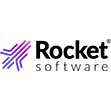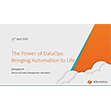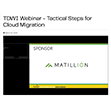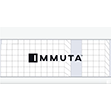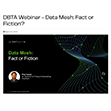

Objectivity, an established Silicon Valley firm with experience in high-performance distributed object-oriented databases, today debuted a new Hadoop-based product that addresses one of the looming challenges in the Internet of Things (IoT): How to handle metadata management of big and fast streaming data.
It may not seem obvious from the outside, but one of the challenges in tackling big streaming data is metadata management. Much of the unstructured and semi-structured data that flows (or will flow) across the IoT is not readily usable in its raw form. Time-series data, in particular, often needs to be transformed before it can be consumed, by analytic applications or otherwise.
Marking up one data stream wouldn’t be so bad. The associated metadata can be cataloged and stored without too much trouble. But as organizations mix and match multiple streams, the whole pipeline threatens to become a messy quagmire.
That’s roughly the challenge that Objectivity hopes to address with ThingSpan, the new YARN-certified Hadoop application that the company unveiled this morning. Inspired by Objectivity’s success in the object-oriented database (Objectivity/DB) and graph database (InfiniteGraph) spaces–and borrowing technology from those two products—the new ThingSpan product should help keep customers’ IoT and streaming data projects on the straight and narrow, says Jin Kim, vice president of marketing and partner development for Objectivity.
“A lot of this senor data comes in time-series form and time-series data has high dimensionality that’s not well suited for many of the analytic algorithms. So one of the key aspects is dimensionality reduction,” Kim tells Datanami.
“But when we do that kind of dimensionality reduction, we need to create a lot of metadata, because some of the analytics is run on the metadata and not the actual raw data,” Kim continues. “What we’re trying to do is to basically create the frameworks so we can enrich it with semantics technology so it can be more oncology driven. It’s about MDM and the automatic creation of metadata and the data model that is necessary for complex fusion processes.”
ThingSpan will be that Hadoop-based repository of metadata created from that streaming data. The company won’t do any of the actual analytics—it will leave that up to the individual customer, who typically have strong preferences. “We kind of want to keep it analytics agnostic so they can bring their favorite buffet of analytic tools with them,” Kim says. “We’re not about to tell our customer that we have a better set of enrichment or clustering or anomaly detection techniques than they do.”
With that said, the software is being developed to work with the graph analytic and machine learning tools available in Apache Spark. It’s also being developed to work with Apache Kafka, as well as Project Apex, a streaming analytic application developed by DataTorrent.
Objectivity thinks it can offer companies that are building streaming analytics and IoT applications a better and more scalable MDM framework that what is currently available, which tend to be mostly modified NoSQL databases, Kim says. Objectivity has been solving these sorts of problems for customers in the intelligence and military sector for the past decade, and now sees an opportunity as real-time analytic applications become more common in the commercial market.
“Objectivity has been dealing with the domain of how to integrate and fuse fast time-series data form sensor networks and enrich them with contextual information for a long time,” Kim says. “It’s been doing this on beyond petabyte-scale data, approaching data ingestion rates well over 1 billion events per second.”
The popularity of object-based technologies has come and gone over the years, but the folks at Objectivity see the technology now being used to bring performance and scalability advantages to the burgeoning field of IoT and streaming analytic applications.
“One of our intelligence customers told us recently that for every piece of data they ingest, they generate six separate metadata items for all the relationships they need to maintain,” Kim says. That’s why “object-based technology is coming into vogue again, [because] as people introduce concepts like data lakes and the idea of ingesting multi-various types of data…you are beginning to deal with much more complex metadata.”
ThingSpan has been certified to run on the Hadoop distributions from Hortonworks and Cloudera, and Objectivity is working with MapR Technologies, Kim says. This will jump start the MDM efforts of companies that are developing IoT and streaming analytic applications on Hadoop, without subjecting them to the steep learning curve that organizations in the intelligence and oil and gas fields had to deal with, and without incurring the high price tags that accompany enterprise streaming analytic products from big-name vendors like IBM and Software AG, Kim says.
“The industry needs a standard stack for running advanced and streaming analytics,” says Kim, who worked previously worked at Skytree. “Intel‘s Trust Analytics initiative is a good [start]. But we need more standards…To effectively run complex analytics, you need to automatically generate and maintain the complex metadata and relationships. We think more and more that metadata structure will be ontology-driven. It has to be as the data set gets richer and just from a provenance point of view. You have to do it.”
ThingSpan will become generally available in October. The company will be showcasing the product next week at the Strata + Hadoop World conference in New York City.
Related Items:
One Deceptively Simple Secret for Data Lake Success
What’s Driving the Rise of Real-Time Analytics
Unstructured Data Analytics Shouldn’t Be Such a Mess
September 16, 2025
- MongoDB Launches AI-Powered Application Modernization Platform to Reduce Technical Debt and Speed Innovation
- UC San Diego Plays Key Role in National Effort to Build a Fusion Research Data Platform
- NVIDIA Welcomes Data Guardians Network to Its Elite Startup Program
- Acceldata Survey Finds Persistent Gaps in Enterprise AI Data Readiness
- Exabeam and DataBahn Partner to Accelerate AI-Powered Security Operations with Smarter Threat Detection
- Domino Data Lab Achieves ISO 9001 and SOC 2 Type II With Zero Findings
- Qlik Open Lakehouse Now Generally Available, Giving Enterprises Rapid, AI-Ready Data on Apache Iceberg
- Expert.ai and Springer Nature Partner to Transform Clinical Trials with AI-Driven Intelligence and Deep Domain Expertise
- Denodo Expands AI Capabilities with Release of DeepQuery in Platform 9.3
- Indicium Receives Investment from Databricks Ventures
- DataOps.live Launches Major Upgrade to Deliver AI-Ready Data at Enterprise Scale
- Ethernet Alliance to Showcase Multivendor Live Demonstration at ECOC 2025
- Allot Leverages SnapLogic to Launch AI Agent to Highlight Health Inequalities in Pharma
September 15, 2025
- Penn State Center for Social Data Analytics Now Accepting Grant Applications
- Pacific Wave, Cal Poly Humboldt, and Internet2 Collaborate on Connectivity to Singapore, Guam, and Jakarta
- Governing AI Starts with Giving Users Control Over Their Data
- KX and OneTick Merge to Unite Capital Markets Data, Analytics, AI and Surveillance on One Platform
- Snowflake Ranked by Fortune as #1 on Its Future 50 2025 List
- Exabeam and Cribl Partner to Power Scalable, High-Fidelity Threat Detection with Next-Gen Data Pipelines
September 11, 2025
- Inside Sibyl, Google’s Massively Parallel Machine Learning Platform
- What Are Reasoning Models and Why You Should Care
- Beyond Words: Battle for Semantic Layer Supremacy Heats Up
- Rethinking Risk: The Role of Selective Retrieval in Data Lake Strategies
- Software-Defined Storage: Your Hidden Superpower for AI, Data Modernization Success
- The AI Beatings Will Continue Until Data Improves
- What Is MosaicML, and Why Is Databricks Buying It For $1.3B?
- Why Metadata Is the New Interface Between IT and AI
- Top-Down or Bottom-Up Data Model Design: Which is Best?
- How to Make Data Work for What’s Next
- More Features…
- Mathematica Helps Crack Zodiac Killer’s Code
- GigaOm Rates the Object Stores
- Solidigm Celebrates World’s Largest SSD with ‘122 Day’
- Promethium Wants to Make Self Service Data Work at AI Scale
- Databricks Now Worth $100B. Will It Reach $1T?
- AI Hype Cycle: Gartner Charts the Rise of Agents, ModelOps, Synthetic Data, and AI Engineering
- MIT Report Flags 95% GenAI Failure Rate, But Critics Say It Oversimplifies
- The Top Five Data Labeling Firms According to Everest Group
- Data Prep Still Dominates Data Scientists’ Time, Survey Finds
- Career Notes for August 2025
- More News In Brief…
- Seagate Unveils IronWolf Pro 24TB Hard Drive for SMBs and Enterprises
- Gartner Predicts 40% of Generative AI Solutions Will Be Multimodal By 2027
- DataSnap Expands with AI-Enabled Embedded Analytics to Accelerate Growth for Modern Businesses
- Acceldata Announces General Availability of Agentic Data Management
- Transcend Expands ‘Do Not Train’ and Deep Deletion to Power Responsible AI at Scale for B2B AI Companies
- Pecan AI Brings Explainable AI Forecasting Directly to Business Teams
- SETI Institute Awards Davie Postdoctoral Fellowship for AI/ML-Driven Exoplanet Discovery
- NVIDIA: Industry Leaders Transform Enterprise Data Centers for the AI Era with RTX PRO Servers
- Hitachi Vantara Recognized by GigaOm, Adds S3 Table Functionality to Virtual Storage Platform One Object
- Ataccama Data Trust Assessment Reveals Data Quality Gaps Blocking AI and Compliance
- More This Just In…
















